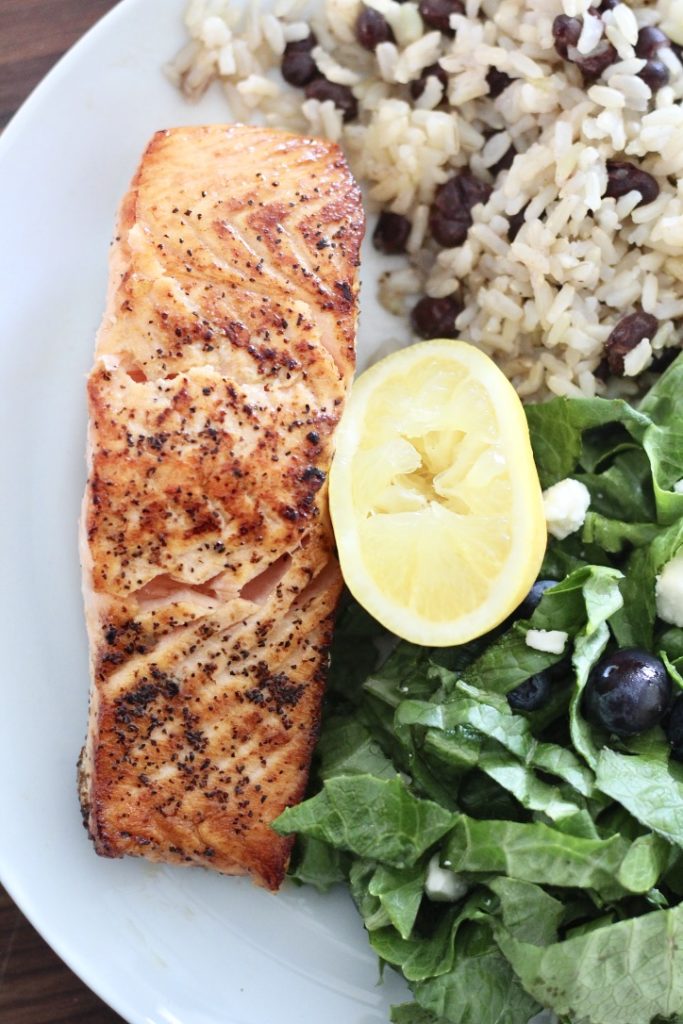
This post was sponsored by Seafood Nutrition Partnership. All thoughts and opinions are my own.
If you only order seafood from restaurants because you think it’s too complicated to fix at home, keep reading to learn three simple and easy ways how to cook salmon in under 15 minutes at home.
Personally, salmon is my favorite type of seafood because of the flavors, textures, AND nutrition profile… It’s loaded with not only omega-3s and protein, but also one of the best naturally occurring sources of vitamin D, and I’m going to show you three super simple strategies for how to cook salmon at home.
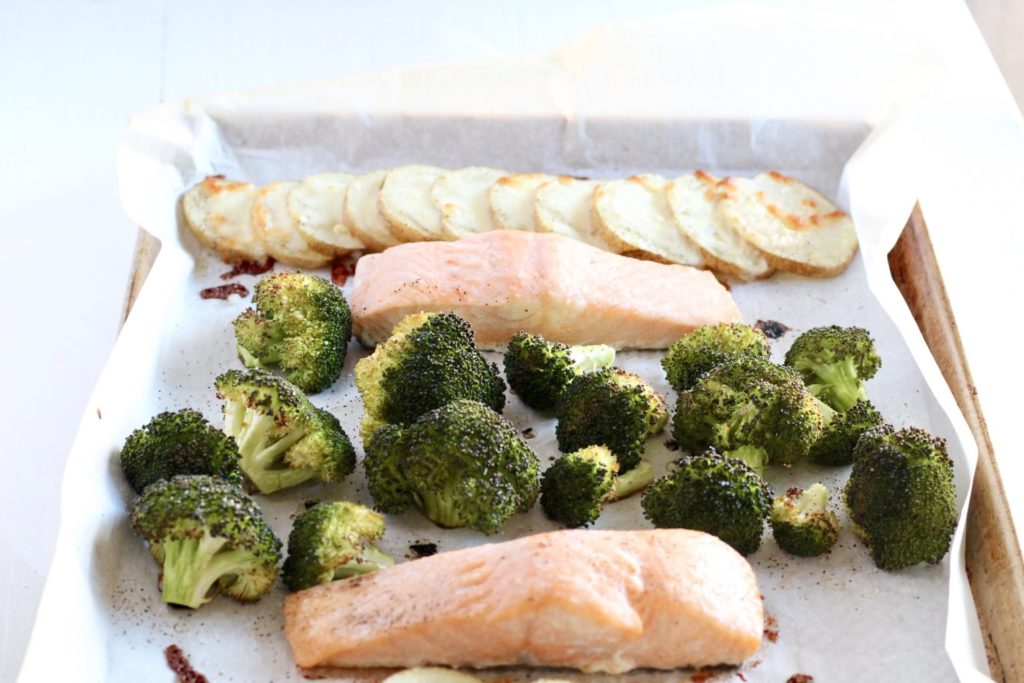
Commonly available types of salmon
Before we talk about how to cook salmon, let’s look at the different types of salmon that are available most often at your local grocery store. You’ll see many words describing fish available here in the US, but here’s a few key points to remember about salmon:
- Most environmental watch groups recommend opting for wild-caught or responsibly farmed salmon. Buy your salmon from a reputable store or market – almost all grocery stores have a sustainable buying practice in place. Look for a certification seal on the package or fresh counter such as MSC, BAP or ASC. You can also visit FishWatch.gov or download the Seafood Watch app from the Monterey Bay Aquarium, both of which list sustainable seafood choices based on where the fish is from, how it was caught, and additional factors.
- Organic doesn’t really indicate much about salmon other than the fact that it is farmed – there is no organic standard for seafood in the United States. I recommend focusing more on where your fish came from.
- Fresh, frozen, and canned salmon are all excellent choices.
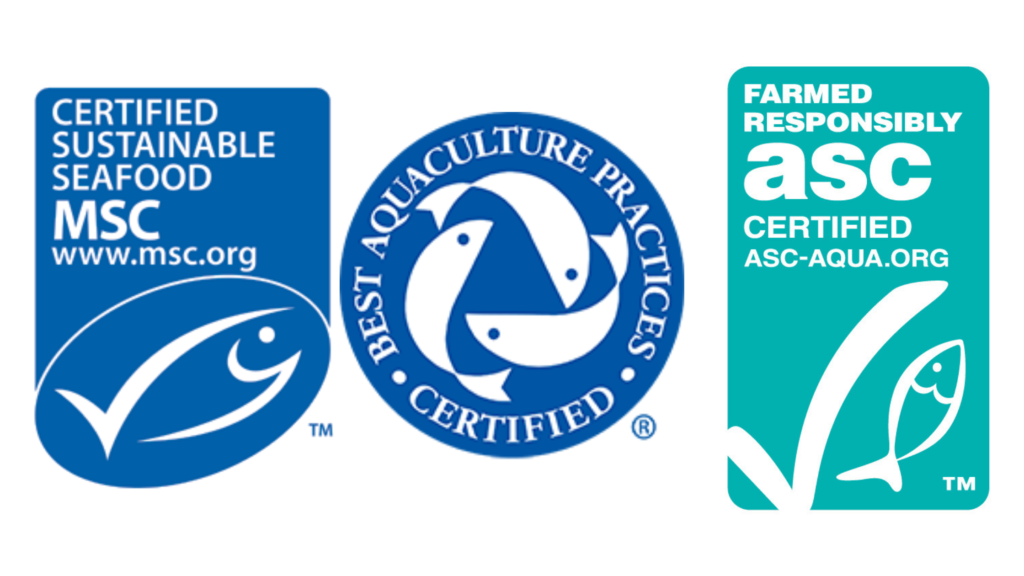
If you are interested in reading more about the different species of salmon and farmed v. wild caught, I recommend this article from Cooking Light and this one from Food & Wine; and this Seafood Buying Guide from the Seafood Nutrition Partnership.
Important salmon nutrition facts
It’s pretty well known that salmon is a nutritional powerhouse, but just in case you need more reasons to love this delicious fish, here’s a few:
- Salmon is one of the few excellent sources of naturally occurring vitamin D. A 4oz portion of salmon offers 100% of your daily vitamin D needs.
- Salmon is one of the best sources of omega-3 fatty acids. Omega 3 fatty acids have a whole host of research-backed health benefits including reducing risk for and complications from many chronic illnesses.
- A 4oz serving of salmon is an excellent source of B vitamins.
- Eating salmon consistently may reduce your risk of heart disease.
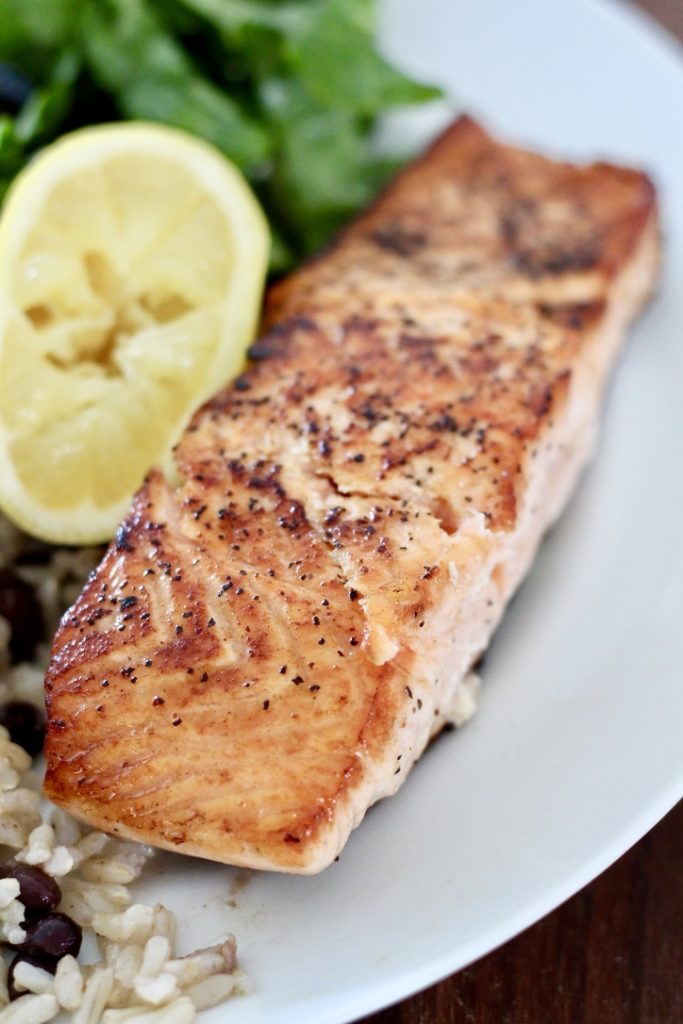
What temp should salmon be cooked to?
Below I’m going to show you how to cook salmon three different ways… all in less than 15 minutes. But for all three of these cooking methods, how do you know when it’s done?
The best way to tell if a fish is done is by testing it with a fork. Insert the fork at an angle, at the thickest point, and twist gently. The fish will flake easily when it’s done, and it will lose its translucent or raw appearance. If you are new to preparing salmon, try using a food thermometer and cook the fish to an internal temperature of 140° to 145°F.
Do you wash salmon before cooking?
Wash is a strong word, but yes! You should rinse your thawed or frozen salmon in cold water and pat it dry before cooking it. You’ll see that listed in the steps below.
How to cook frozen salmon
Frozen salmon can be cooked using the same methods as thawed fish with some timing adjustments. There’s also some small technique changes I’ll note below depending on the method of cooking.
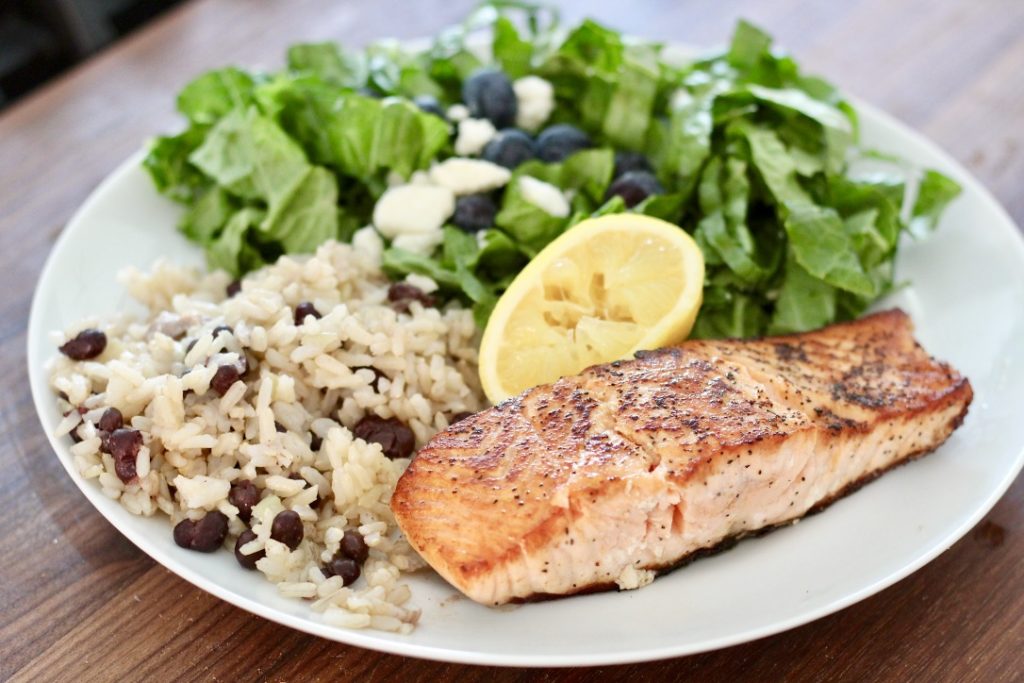
How long to cook frozen salmon
In general, we will cook most thawed salmon for 10-12 minutes and if it is frozen, we’ll need to add 10-12 additional minutes for a total of 20-25 minutes if cooking from frozen.
How to cook salmon in a skillet
Start with a 6oz filet of salmon. Preheat a large skillet over medium-high heat for 2-3 minutes. Spray the pan with avocado oil and let it warm for 4-5 minutes, making sure it coats the bottom of the pan. Meanwhile, rinse your salmon with cold water and pat dry. Transfer the salmon to the skillet. Cook the salmon for 5-6 minutes skin side up, then flip it over so the skin side is down and cook for an additional 4-5 minutes.
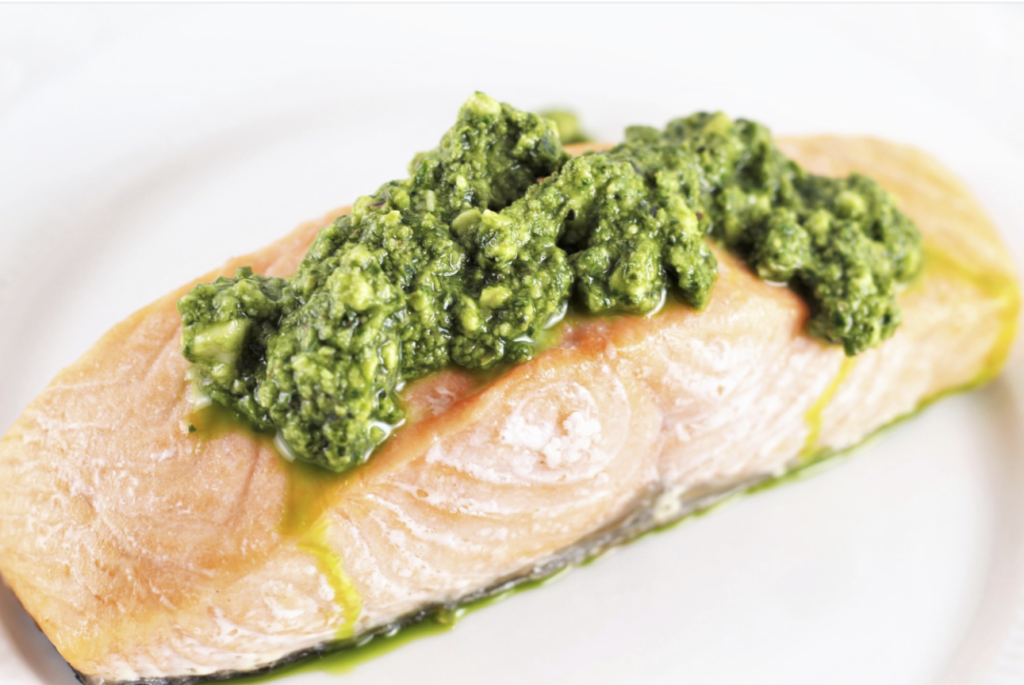
How to cook frozen salmon on the stove
How to cook salmon from frozen on the stovetop is just a matter of adding some time. If your salmon filet is frozen, I recommend following the directions above and adding 5 minutes to each side of cooking for a total of 10 minutes on one side and 10 minutes on the other.
I do think that cooking from thawed is best for the texture of the fish though and if you have time just give your frozen fish a quick defrost. You can let the fish thaw slowly in the refrigerator overnight on paper towels. Or, submerge it in its vacuum packaging or a water-tight bag in cold water for 15-20 minutes.
How to cook salmon in the oven
Rinse your salmon with cold water and pat it dry. Arrange the salmon on a foil lined pan and sprinkle with salt and lemon juice (see recipe card below for amounts). Spray it with avocado oil. Cook the salmon for 12-13 minutes, in an oven preheated to 400 degrees.
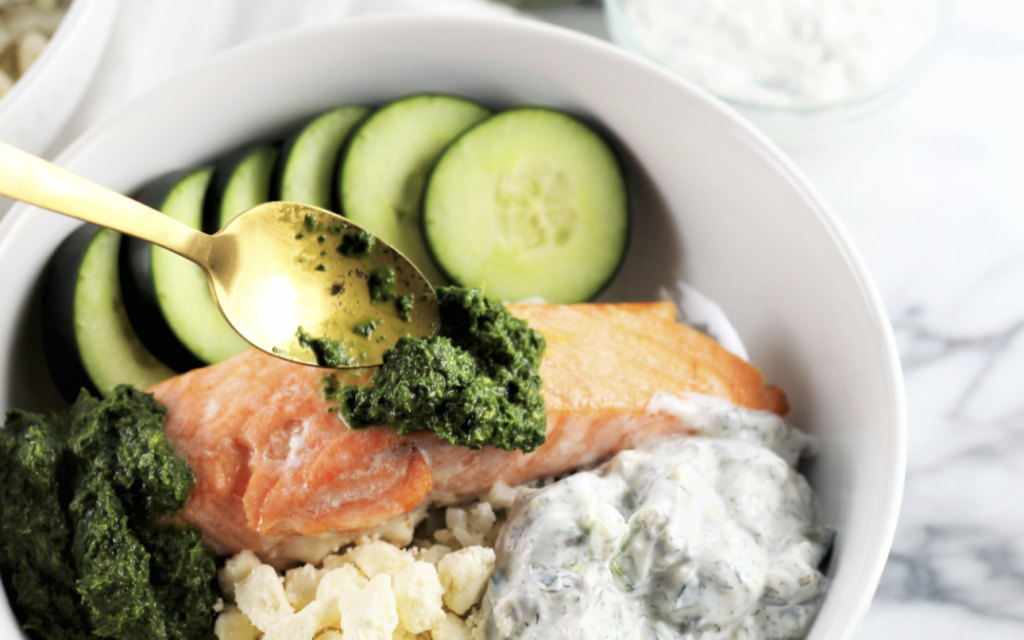
How to cook frozen salmon in the oven
If your salmon is frozen, cook it in a baking dish covered in foil and add 10 minutes to your cook time for a total of 22-23 minutes. I’d also recommend spraying the oil and adding salt after it’s done cooking.
How to cook salmon in the air fryer
This is hands down my favorite method and I cannot wait to teach you how to cook salmon in an air fryer!
First, rinse your salmon with cold water and pat it dry. Spray the bottom of the air fryer basket with oil, and then arrange the filet(s) in the air fryer basket and sprinkle with salt, and lemon juice (if using). Spray the salmon with avocado oil. Run the air fryer for 7 minutes on 400 degrees.
How to cook frozen salmon in the air fryer
If your filet of salmon is frozen and you want to cook it in the air fryer, add 6-7 minutes to the cook time for a total of 14-15 minutes.
Where to buy salmon
You should purchase your salmon from reputable grocery stores and/or markets. Or join a seafood delivery service. I’ve used Fish Fixe (a local woman-owned Houston-area company that ships nationwide) for years to get our seafood. Fish Fixe offers premium seafood delivered straight to your front door. Each month you receive 16 six ounce portions of premium seafood (salmon is one of the options to choose from). They will arrive individually packaged and frozen. If you want to try it for yourself, you can use the code MILKNHONEY for $10 off your first order.
My favorite salmon recipes
Mediterranean Cauliflower Rice Bowls with Salmon
Smoked Black Pepper and Salmon Ceasar Salad
Colorful Mediterranean Omelette with Feta
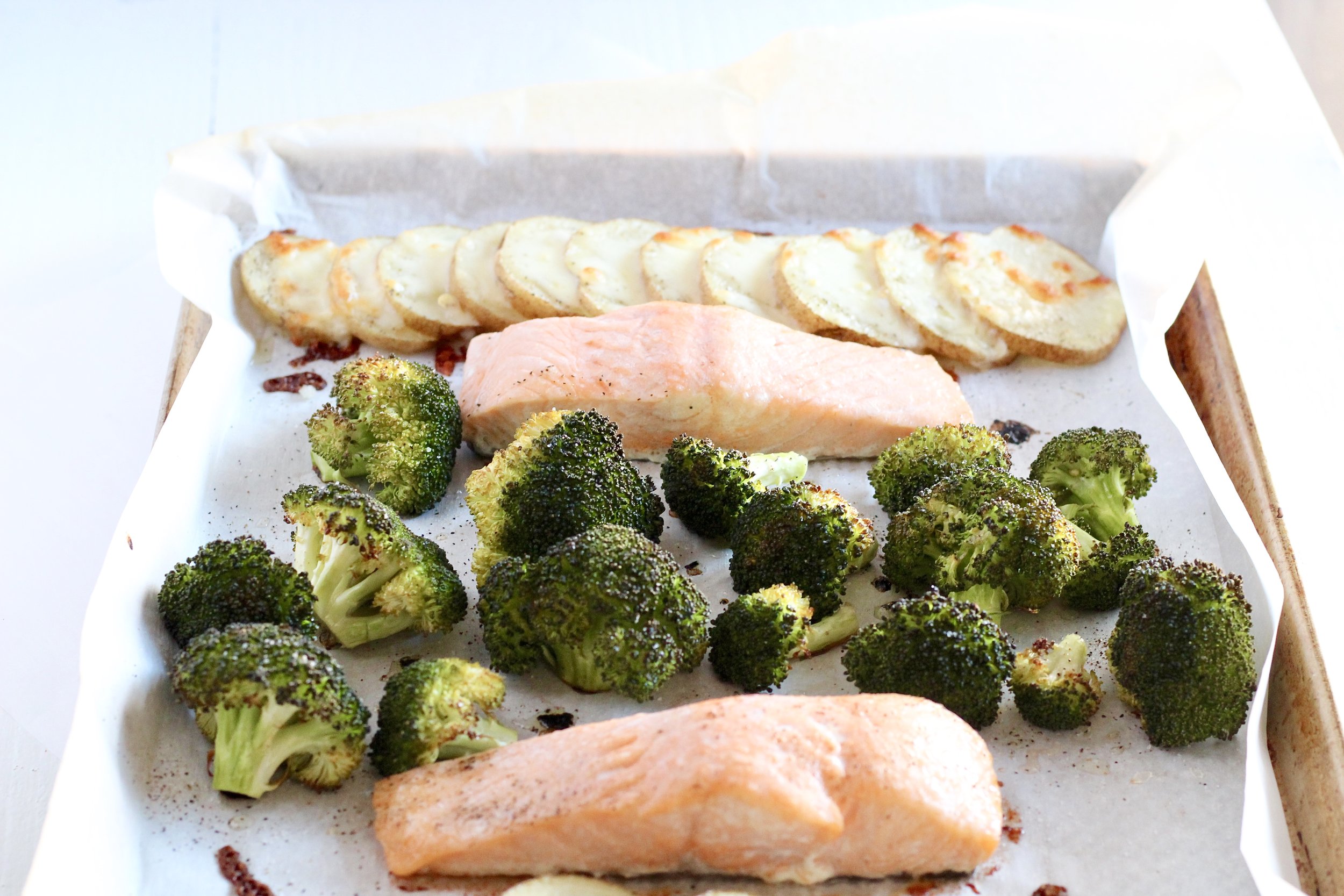

How to cook salmon at home
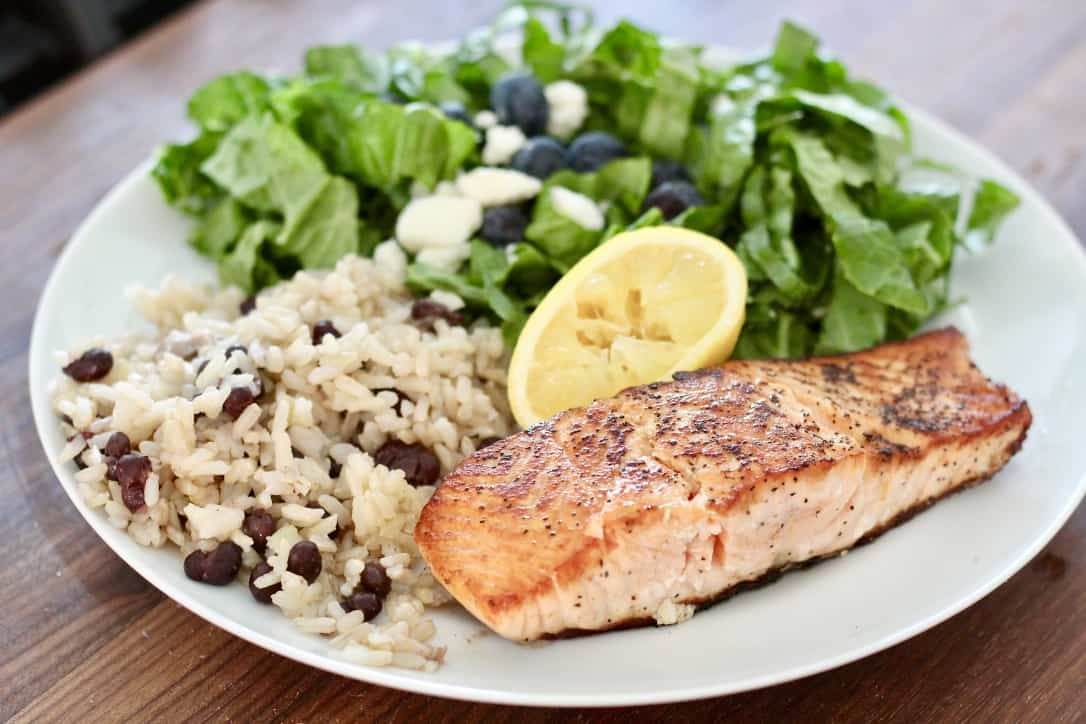
Ingredients
- 6 oz. raw salmon
- Oil spray of choice I prefer avocado oil
- ¼ tsp salt
- Juice from 1/2 lemon optional
Instructions
Stovetop instructions:
- Preheat a large cast iron skillet over medium-high heat for 2-3 minutes. Spray the pan with avocado oil and let it warm/melt for 4-5 minutes, making sure it coats the bottom of the pan. Meanwhile, rinse your salmon with cold water and pat dry.
- Sprinkle the salmon with the salt, and lemon juice.
- Transfer the salmon to the skillet. Cook the salmon for 5-6 minutes skin side up, then flip it over so the skin side is down and cook for an additional 4-5 minutes.
Air fryer instructions:
- Rinse your salmon with cold water and pat dry. Arrange them in the air fryer basket and sprinkle with the salt, and lemon juice (if using). Spray with avocado oil. Run the air fryer for 7 minutes on 400 degrees.
Oven instructions:
- Rinse your salmon with cold water and pat dry.
- Arrange the salmon on a foil lined pan and sprinkle with the salt and lemon juice (if using).
- Spray wit avocado oil. Cook the salmon for 12-13 minutes, on 400 degrees.

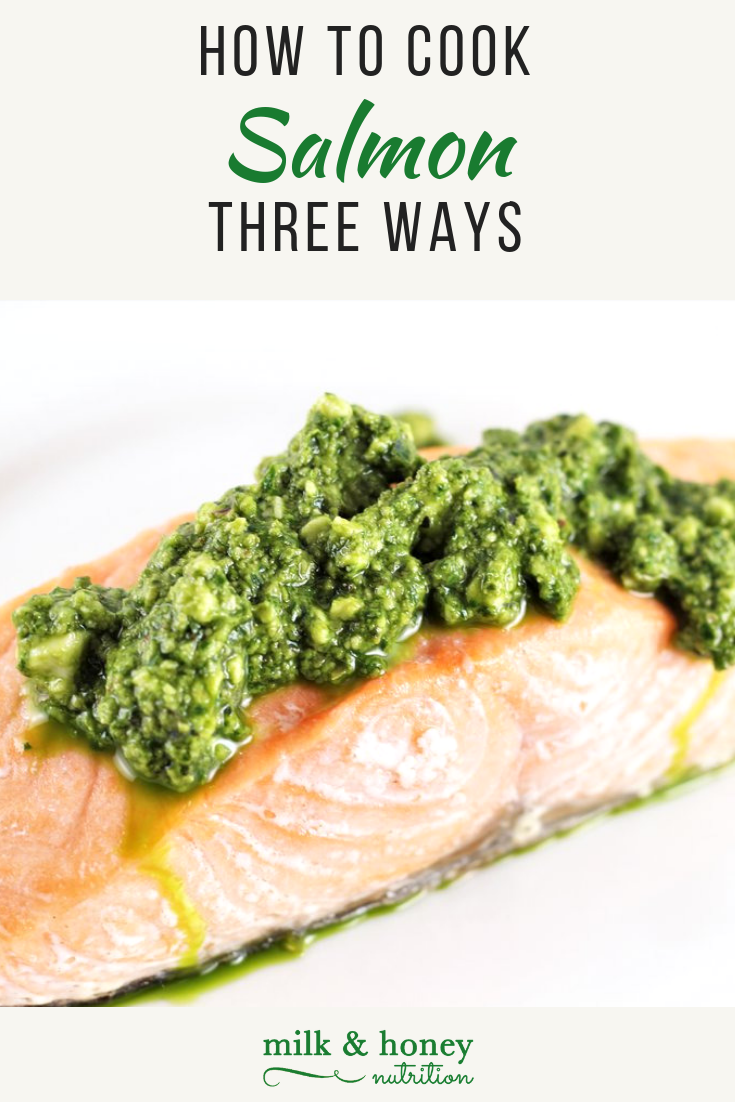


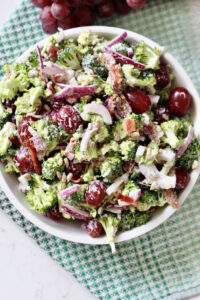

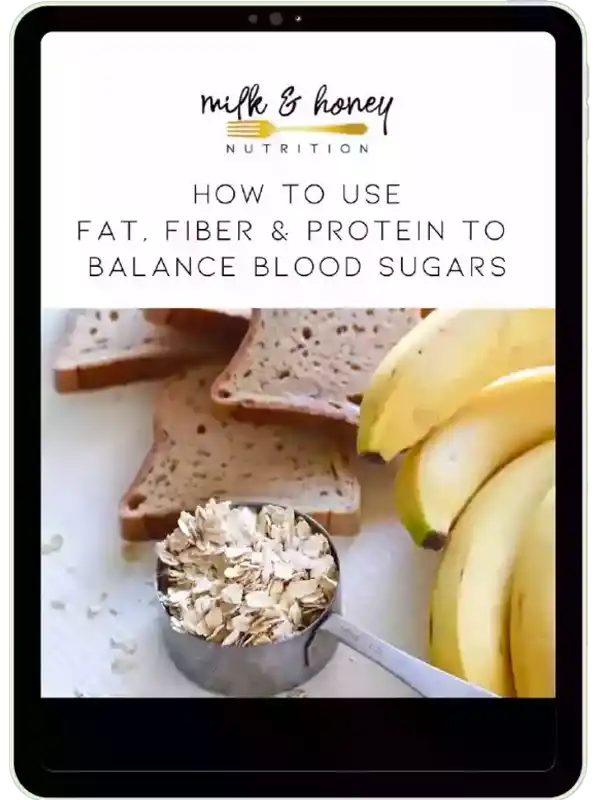
6 Responses
Absolutely fantastic salmon!! I use it with a berry salad I love. I didn’t have any fresh herbs on hand, but did have fresh garlic. It still came out amazingly. Can’t wait to try it with fresh ingredients!
So glad to hear this! We love salmon around here too!
I really like this recipe. I would also recommend using honey and garlic with lemon and butter. I have cooked this dish today, it tastes perfect.
That sounds delicious!
Love your site! (but I have many questions!) 😉
1. Do you use a non-stick frying pan or a plain one? (I need to buy a new one)
2. I love avocados, but tried a mayo made with avocado oil & didn’t like it. Why do you prefer it over, say, a good olive oil?
3. When I looked into buying an air fryer, I got the impression that it was just a small scale convection oven? Since I already have a convection oven, I’ve just stayed with that. What am I missing? Given that I generally cook for just me, maybe I should reconsider?
4. I bought a big bag of individual salmon filets at Costo. They are thin, skinless, and, perhaps because of that, essentially flavorless. Any thoughts on how to use those up?
Hi Ellen,
1) I have both and use both depending on what I’m cooking
2) It’s a preference for the quality of oil used but olive oil works great too!
3) It is! The smaller size though means quicker cooking times
4) Salt, pepper, and oil is always my go to!